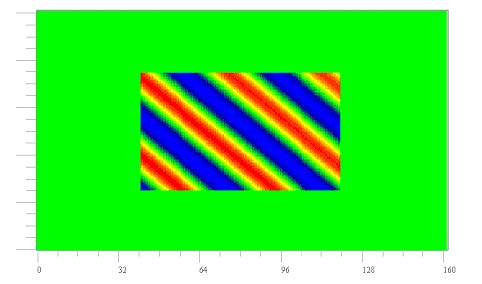The Total-field/Scattered-field (TF/SF) technique results from attempts to realize any
tilting plan-wave source that avoids the difficulties caused by using either the hard
source or the boundary conditions. 2D TF/SF is a special type of formula that
generates a wave in the enclosed rectangular surface. Inside the rectangular region,
it generates the total field (including incident wave and scattering wave together).
Outside of this rectangular region, it generates the pure scattering field or reflected
field. Figure 17 shows a 2D sketch for 2D TF/SF. TF/SF used special numerical
formula to separate the total field and scattering field. A 2D free space TF/SF
response is shown in Figure 18.
Figure 17: TF/ST Sketch
Figure 18: Field response for a TF/SF sketch
In OptiFDTD, it is the user’s choice to set up the total field working area position, size
and the scattering field detector position. After the simulation, the steady state
scattering field response can be obtained in the scattering field detector. If all four
scattering- field detector lines are active, Radar Cross Section (RCS) can also be
performed based on the near scattering field response, RCS calculation formula is
listed in the post-simulation data analysis section.



